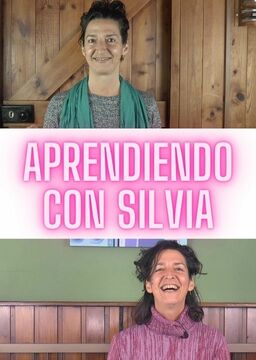









Difficulty:
 Intermediate
Intermediate
Mexico
Tatiana shares with us some home remedies for the restoration of our physical and spiritual health.
Difficulty:
 Intermediate
Intermediate
Ecuador
Doctor Luna Jaramillo from Ecuador speaks to us about migraine headaches and other related conditions.
Difficulty:
 Adv-Intermediate
Adv-Intermediate
Argentina, Colombia, Costa Rica, Cuba, Dominican Republic, Ecuador, Guatemala, Mexico, USA, Venezuela
Although one language unites the people from all Spanish-speaking countries, it is useful- and fun- to become familiar with the different vocabulary and expressions utilized by Spanish speakers from various nations.
Difficulty:
 Intermediate
Intermediate
Colombia
Carlos teaches us a trick for conjugating verbs with the "voseo" and challenges us to distinguish verbs in sentences which have been conjugated with the "tuteo," "voseo" and "ustedeo."
Difficulty:
 Intermediate
Intermediate
Ecuador
Ecuadorian gynecologist and perinatologist Pedro Pablo Luna Jaramillo is passionate about childbirth and addressing the concerns of expectant mothers.
Difficulty:
 Beginner
Beginner
Mexico
Tatiana explains the symbolism behind the colors of the Mexican flag- red, white and green- as well as preparing a dish which both includes those colors and honors those values.
Difficulty:
 Beginner
Beginner
Colombia, Spain
It's Cleer's first day at her new job and a workload already awaits her.
Difficulty:
 Adv-Intermediate
Adv-Intermediate
Mexico
Learn how to make all sorts of arts and crafts projects with our friend, Meli. Manos a la obra is a new series for all the DIY kids and teenagers out there who love to get to work. The Spanish expression "manos a la obra" literally means "let's put our hands into the work" and is customarily used by Spanish speakers to encourage each other to work when a task is at hand. In this video, Meli shows us how to make some delicious treats inspired by the video game, Minecraft. Are you ready to practice your Spanish while having some crafty fun? Let's get to work!
Difficulty:
 Beginner
Beginner
Colombia
Carlos explains the forms of address used to address several conversational partners: "vosotros" and "vosotras," which tend to be used in Spain, and "ustedes," which tends to be used in Central and South America.
Difficulty:
 Intermediate
Intermediate
Ecuador
A doctor from Ecuador speaks to us about respiratory allergies, particularly those which cause recurrent symptoms in children.
Difficulty:
 Intermediate
Intermediate
Mexico
In celebration of the Day of the Dead, a Mexican holiday in which the departed are sometimes honored with the preparation of their favorite dishes, Tatiana shares with us a bit about her recipe for "Dead Raising Chilaquiles," as well as her philosophy regarding life and death.
Difficulty:
 Beginner
Beginner
Colombia
Cleer awaits a phone call from Lida to find out whether or not she got the job for which she recently interviewed.
Difficulty:
 Beginner
Beginner
Colombia
Cleer attends her first post-college interview for a marketing position.
Difficulty:
 Beginner
Beginner
Colombia
Known as the "tuteo," the "ustedeo" and the "voseo," Carlos explains the historical roots and evolution of these varying ways of saying "you" in different parts of the Spanish-speaking world. Factors which affect which form is utilized by a particular person in a particular situation include that person's country of origin as well as the relationship between the speaker and the person to whom he or she is speaking.
Difficulty:
 Beginner
Beginner
Colombia
Freshly out of college, Cleer Oviedo sets up an interview for a potential marketing job.
Are you sure you want to delete this comment? You will not be able to recover it.